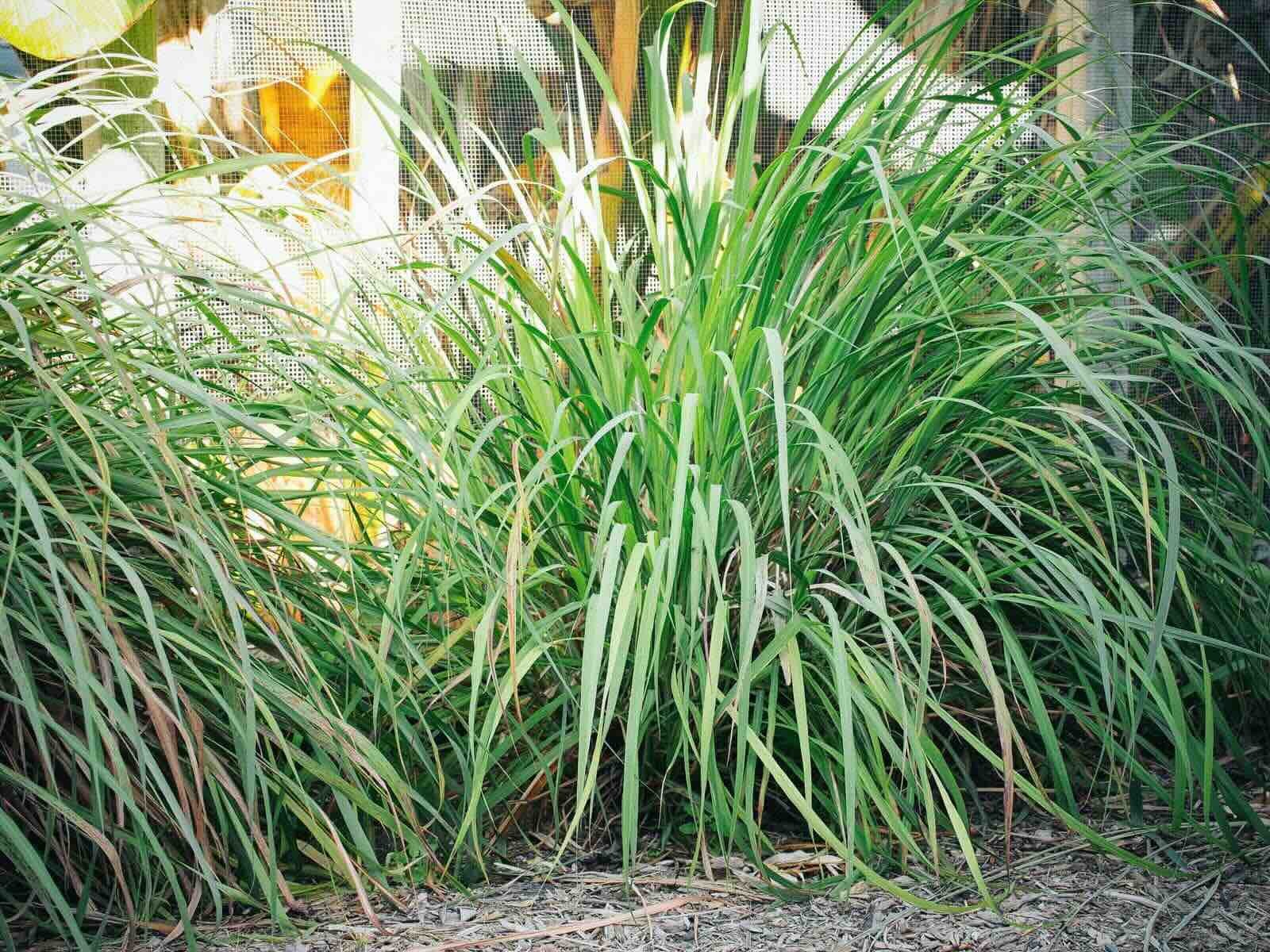Home>Gardening & Outdoor>Landscaping Ideas>When Is Lemongrass In Season


Landscaping Ideas
When Is Lemongrass In Season
Published: January 28, 2024
Discover the best landscaping ideas for incorporating lemongrass into your garden. Learn when lemongrass is in season and how to maximize its beauty and benefits.
(Many of the links in this article redirect to a specific reviewed product. Your purchase of these products through affiliate links helps to generate commission for Storables.com, at no extra cost. Learn more)
Introduction
Welcome to the fragrant world of lemongrass! If you’re a fan of fresh, citrusy flavors and delightful aromas, then lemongrass is an herb that deserves a place in your culinary repertoire. This versatile herb, with its subtle yet distinctive taste, has been a staple ingredient in Southeast Asian cuisine for centuries. However, its popularity has transcended geographical boundaries, finding its way into kitchens and gardens around the globe.
Whether you’re a seasoned chef or a novice cook, lemongrass can add a unique zing to your dishes, elevating them to new heights of flavor. Beyond its culinary uses, lemongrass also boasts a range of health benefits, making it a valuable addition to your wellness routine. In this comprehensive guide, we’ll delve into the world of lemongrass, exploring its growing seasons, culinary applications, and much more. By the end of this journey, you’ll be well-equipped to make the most of this delightful herb, whether in the kitchen or the garden.
Key Takeaways:
- Lemongrass thrives in warm, humid climates and is typically planted in the spring. It can be grown year-round in milder winters or in containers in harsh winters, making it a versatile addition to any garden.
- When buying lemongrass, look for firm, pale yellow or green stalks with a strong citrus aroma. Store it in the refrigerator for up to two weeks or freeze it for longer-term use. Lemongrass can also be found in dried or powdered forms as a substitute when fresh stalks are not available.
Read more: When Is Wildflower Season In Pennsylvania
Understanding Lemongrass
Lemongrass, scientifically known as Cymbopogon, is a tropical plant renowned for its refreshing citrus flavor and aroma. It belongs to the grass family (Poaceae) and is characterized by tall, slender stalks and long, blade-like leaves. Native to regions such as Southeast Asia, India, and Australia, lemongrass thrives in warm, humid climates, making it a staple in the cuisines of these areas.
Aside from its culinary uses, lemongrass has a rich history of medicinal and therapeutic applications. Its essential oils are often used in aromatherapy for their calming and invigorating properties. Additionally, lemongrass is celebrated for its potential health benefits, including its anti-inflammatory and antioxidant properties. This multifaceted herb is a source of essential vitamins and minerals, further enhancing its appeal as a valuable addition to a healthy diet.
When it comes to flavor, lemongrass offers a delightful combination of citrusy brightness and subtle earthy undertones. Its unique profile allows it to complement a wide array of dishes, ranging from soups and curries to teas and desserts. Whether used fresh, dried, or as an essential oil, lemongrass infuses any recipe with a refreshing and aromatic twist, earning its status as a beloved ingredient in global cuisine.
Lemongrass Growing Seasons
Lemongrass is a warm-weather herb that flourishes in tropical and subtropical climates. Understanding its growing seasons is essential for cultivating this aromatic plant successfully. In regions with distinct seasons, lemongrass is typically planted in the spring, once the threat of frost has passed. It thrives in well-draining soil and requires ample sunlight to reach its full potential.
During the growing season, which spans from late spring to early fall, lemongrass exhibits vigorous growth, with its stalks reaching impressive heights. Regular watering and occasional fertilization support its development, ensuring robust and flavorful stalks. As the weather warms, the essential oils in lemongrass intensify, enhancing its aromatic qualities and culinary appeal.
In areas with milder winters, lemongrass can be cultivated year-round, provided it receives adequate protection during colder spells. Alternatively, in regions with harsh winters, lemongrass can be grown in containers and moved indoors when temperatures drop. This versatility allows enthusiasts to enjoy fresh lemongrass regardless of their climate, making it a prized addition to home gardens and culinary landscapes.
Whether you’re cultivating lemongrass in your garden or exploring local markets for fresh stalks, understanding its growing seasons empowers you to make the most of this vibrant herb. By aligning with its natural rhythms, you can savor the peak flavors and aromas that lemongrass offers, enriching your culinary endeavors with its distinctive essence.
Lemongrass is in season during the warmer months, typically from late spring to early fall. Look for fresh, firm stalks with a strong lemon scent for the best flavor.
Buying and Storing Lemongrass
When it comes to purchasing lemongrass, whether for immediate use or for later storage, selecting high-quality stalks is key to unlocking its full potential. Look for firm, pale yellow or green stalks with a slight bend and a strong citrus aroma. Avoid any stalks that appear dry or have dark spots, as these may indicate age or deterioration.
Upon bringing fresh lemongrass home, it’s essential to store it properly to maintain its flavor and quality. To extend its shelf life, consider refrigerating unwashed lemongrass stalks. Place them in a resealable plastic bag or an airtight container, and they can keep for up to two weeks. For longer-term storage, lemongrass can be frozen, either whole or chopped, allowing you to enjoy its bright flavor in your dishes throughout the year.
When using frozen lemongrass, there’s no need to thaw it before incorporating it into your recipes. Simply chop or grate the desired amount while frozen, and add it directly to your cooking. This convenience ensures that you can harness the vibrant essence of lemongrass without compromising on flavor, even when fresh stalks are out of season.
If fresh lemongrass isn’t readily available in your area, consider exploring specialty stores or online suppliers that offer dried lemongrass or lemongrass powder. While these forms may not fully replicate the fresh herb’s aroma and texture, they can still infuse your dishes with delightful citrus notes, making them viable alternatives when fresh lemongrass is scarce.
By understanding how to select, store, and even substitute lemongrass, you can ensure that this captivating herb remains a staple in your culinary endeavors, enriching your dishes with its bright, citrusy allure year-round.
Cooking with Lemongrass
When it comes to culinary creativity, lemongrass is a versatile herb that can elevate a wide range of dishes with its refreshing citrus flavor. Whether you’re preparing savory soups, aromatic curries, or even beverages and desserts, lemongrass has the ability to infuse your creations with a delightful zing.
To unlock the full potential of lemongrass in your cooking, start by preparing the stalks properly. Remove any tough outer layers and trim the root end, leaving the tender core for use in your recipes. The most common way to incorporate lemongrass is by bruising or finely chopping the core to release its aromatic oils, which can then be added to your dishes for a burst of flavor.
Lemongrass is a popular addition to Thai, Vietnamese, and Indonesian cuisines, where it is often used in soups, curries, and stir-fries. Its bright, citrusy notes complement coconut milk, ginger, garlic, and a variety of spices, creating complex and harmonious flavor profiles. Lemongrass also shines in marinades for meats and seafood, infusing them with a tantalizing freshness that delights the palate.
For a refreshing beverage, consider steeping bruised lemongrass stalks in hot water to create a fragrant tea. You can also incorporate lemongrass into cocktails, adding a unique twist to classic libations. In desserts, lemongrass pairs beautifully with fruits such as mango and pineapple, imparting a sophisticated tropical flair to your sweet treats.
Exploring the diverse applications of lemongrass in your cooking opens up a world of culinary possibilities, allowing you to experiment with flavors and textures to create memorable dining experiences. Whether you’re a seasoned chef or an adventurous home cook, lemongrass invites you to harness its vibrant essence and infuse your dishes with its unmistakable citrus charm.
Read more: When Is Montana Wildflower Season
Conclusion
As we conclude our exploration of lemongrass, it’s evident that this aromatic herb holds a special place in the world of cuisine and wellness. Its refreshing citrus flavor, combined with a rich history of culinary and therapeutic use, makes lemongrass a valuable addition to any kitchen.
From understanding its growing seasons to selecting and storing it with care, we’ve uncovered the nuances of making the most of lemongrass, whether it’s fresh from the garden or sourced from local markets. By embracing its versatility, you can infuse your dishes with the vibrant essence of lemongrass, elevating them to new heights of flavor and aroma.
Moreover, the health benefits and potential medicinal properties of lemongrass further underscore its significance. Whether enjoyed in a soothing tea or incorporated into nourishing recipes, lemongrass offers a holistic approach to wellness, enriching both body and spirit with its natural goodness.
As you embark on your culinary adventures with lemongrass, remember to savor the experience. Embrace its bright, citrusy allure and allow it to inspire your creativity in the kitchen. Whether you’re crafting exotic curries, refreshing teas, or innovative desserts, lemongrass invites you to explore, experiment, and delight in the art of flavor.
With its captivating aroma and distinctive taste, lemongrass is more than an herb – it’s a journey of sensory delight and culinary discovery. So, go ahead, immerse yourself in the world of lemongrass, and let its citrusy charm transport you to new realms of gastronomic pleasure.
Frequently Asked Questions about When Is Lemongrass In Season
Was this page helpful?
At Storables.com, we guarantee accurate and reliable information. Our content, validated by Expert Board Contributors, is crafted following stringent Editorial Policies. We're committed to providing you with well-researched, expert-backed insights for all your informational needs.















0 thoughts on “When Is Lemongrass In Season”